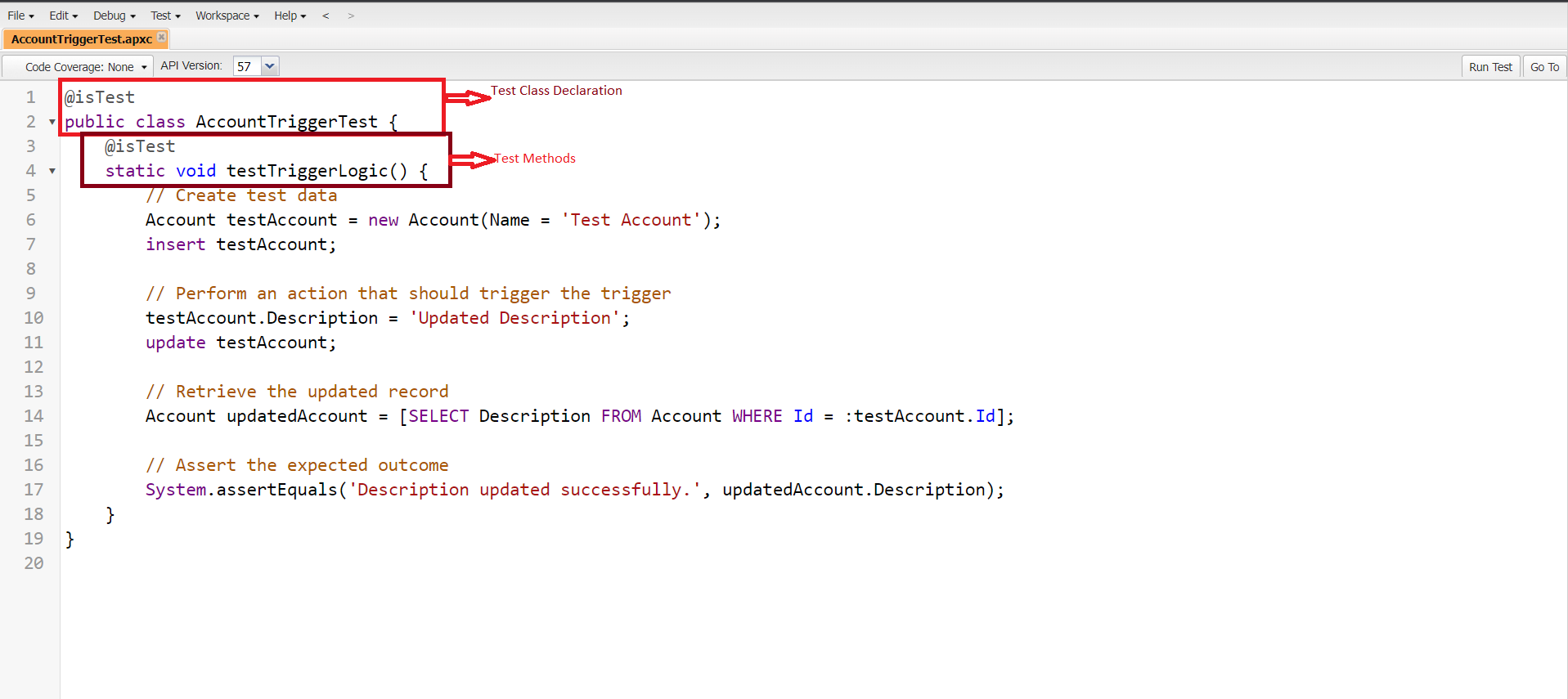Introduction:
Test classes play a crucial role in the development process of Salesforce applications. They allow developers to verify the functionality, performance, and reliability of their Apex code. In this article, we will explore the importance of Apex test classes, delve into their syntax, and discuss best practices for writing effective test classes in Salesforce.
Why Test Classes Matter:
Apex test classes are vital for maintaining code quality and ensuring the stability of Salesforce applications. Here are some key reasons why test classes are essential:
1. Validation of Code Functionality: Test classes validate the expected behavior of Apex code by executing different use cases and scenarios. They help uncover potential bugs, logic errors, and integration issues, ensuring the code behaves as intended.
2. Code Coverage Requirements: Salesforce requires a minimum percentage of code coverage (typically 75% for most organizations) for deploying code to production environments. Test classes are instrumental in meeting these coverage requirements, ensuring that critical code paths are thoroughly tested.
3. Regression Testing: As applications evolve over time, changes to existing code can unintentionally introduce bugs or break existing functionality. Test classes act as a safety net, allowing developers to validate that new changes do not negatively impact the existing codebase.
Syntax of Apex Test Classes:
Apex test classes follow a specific syntax that involves the creation of test methods and utilizing various testing annotations. Here's an overview of the syntax:
1. Test Class Declaration:
- A test class is declared with the `@isTest` annotation, indicating that it is a test class.
- Example: `@isTest public class MyTestClass { ... }`
2. Test Methods:
- Test methods are declared with the `@isTest` annotation as well.
- They are responsible for simulating different scenarios and asserting expected outcomes.
- Example: `@isTest static void myTestMethod() { ... }`

Figure 1: Represent Test Class Declaration and Test Methods in Apex Test Class
3. Testing Annotations:
- Annotations such as `@TestSetup`, `@TestVisible`, and `@SeeAllData` provide additional functionality and
control during testing.
- `@TestSetup` is used to set up data before executing test methods.
- `@TestVisible` enables test methods to access private methods and variables within the code being tested.
- `@SeeAllData` allows test methods to see and manipulate data in the organization, even without creating
test data.
Best Practices for Writing Test Classes:
To ensure effective testing and maintainable code, follow these best practices when writing Apex test classes:
1. Test Coverage: Aim for comprehensive code coverage by creating test methods that cover different use cases, edge cases, and scenarios. Strive for 100% code coverage to maximize confidence in the application's stability.

Figure 2: Code coverage for Trigger by Apex Test Class.
2. Isolation and Independence: Each test method should be independent of others, meaning they should not rely on data or state created by other test methods. Isolate test data creation within each method to prevent interference and maintain test reliability.
3. Data Management: Use the `@TestSetup` annotation to create test data that remains consistent across test methods. This helps reduce redundant data creation and improves test execution efficiency.
4. Assert Statements: Utilize assert statements to validate expected outcomes and ensure code functionality. Compare actual results against expected results to detect and debug any issues during testing.
5. Error Handling and Exceptions: Include test scenarios that cover exception handling and error cases. This ensures that error messages and exception handling mechanisms are properly implemented and tested.
6. Test Bulk Data: When testing code that operates on collections of records, include test cases that cover bulk data scenarios. Test against large data sets to evaluate performance and ensure efficient processing.
7. Maintain Test Class Coverage: Regularly review and update test classes to maintain coverage as new code is added or existing code is modified. Update test methods to accommodate changes in the codebase.
Sample Example of an Apex trigger
trigger description on Account (before insert) {
list
Sample Example of an Apex test class
Here's a simple example of a test class for an Apex trigger:
@isTest
public class AccountTriggerTest {
@isTest
static void testTriggerLogic() {
// Create test data
Account testAccount = new Account(Name = 'Test Account');
insert testAccount;
// Perform an action that should trigger the trigger
testAccount.Description = 'Updated Description';
update testAccount;
// Retrieve the updated record
Account updatedAccount = [SELECT Description FROM Account WHERE Id = :testAccount.Id];
// Assert the expected outcome
System.assertEquals('Description updated successfully.', updatedAccount.Description);
}
}
In this example, we are testing the logic of an Apex trigger on the Account object. The test class sets up a test account, performs an action that triggers the trigger (updating the account's description), and then asserts the expected outcome (checking if the description was updated successfully).
Make sure to adjust the test class code based on your specific trigger and object requirements. Include additional test methods to cover different scenarios and test cases.
Conclusion:
Apex test classes are a critical component of the Salesforce development process, ensuring code quality, reliability, and compliance with coverage requirements. By following the syntax guidelines and implementing best practices, developers can create effective test classes that thoroughly validate their Apex code. Emphasizing code coverage, isolation, data management, assert statements, error handling, bulk data testing, and maintenance, Salesforce developers can achieve robust and dependable applications. With well-written test classes, organizations can confidently deploy their Apex code to production environments, knowing that it has been thoroughly tested and validated.
For any queries on this functionality, please reach out to support@astreait.com.